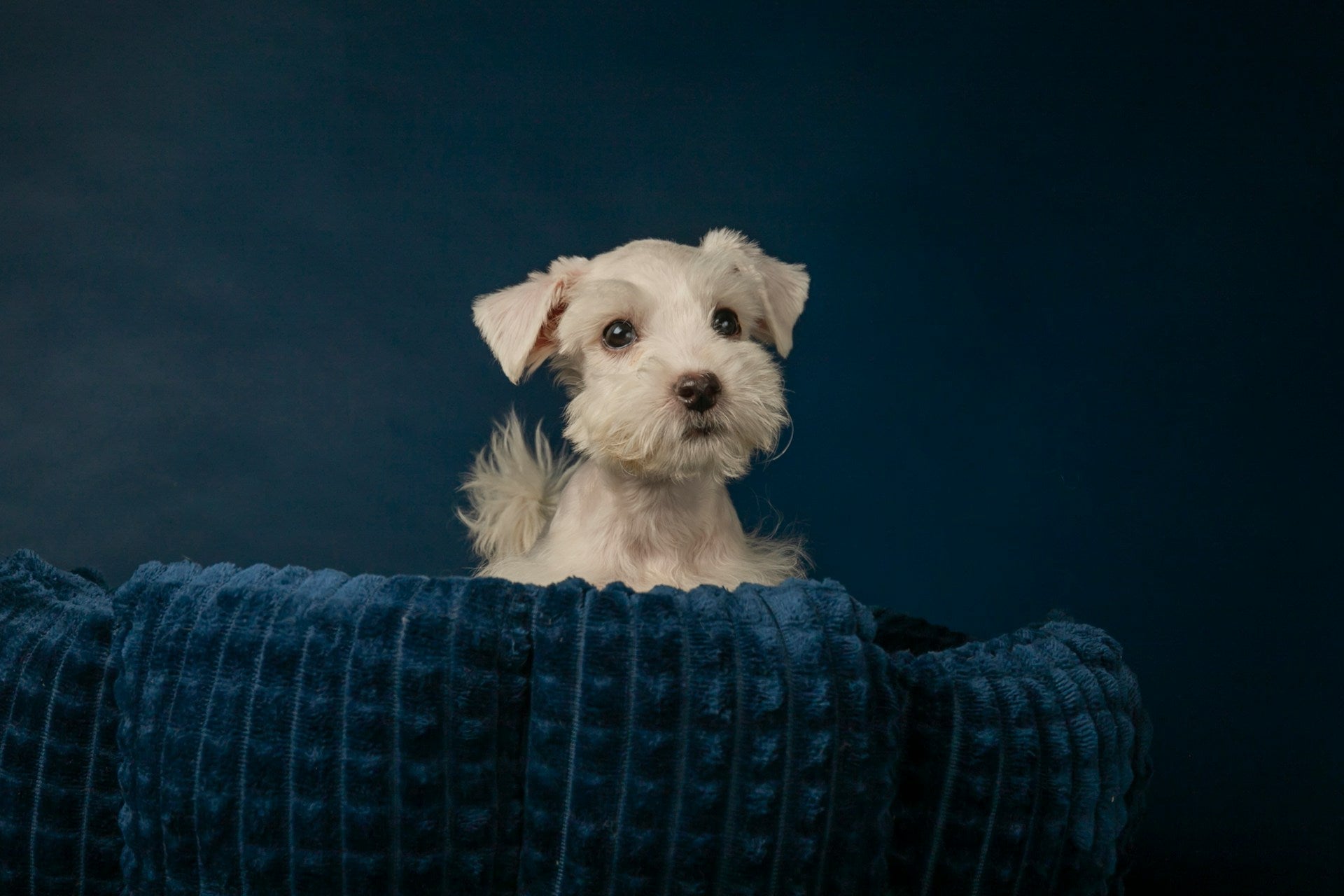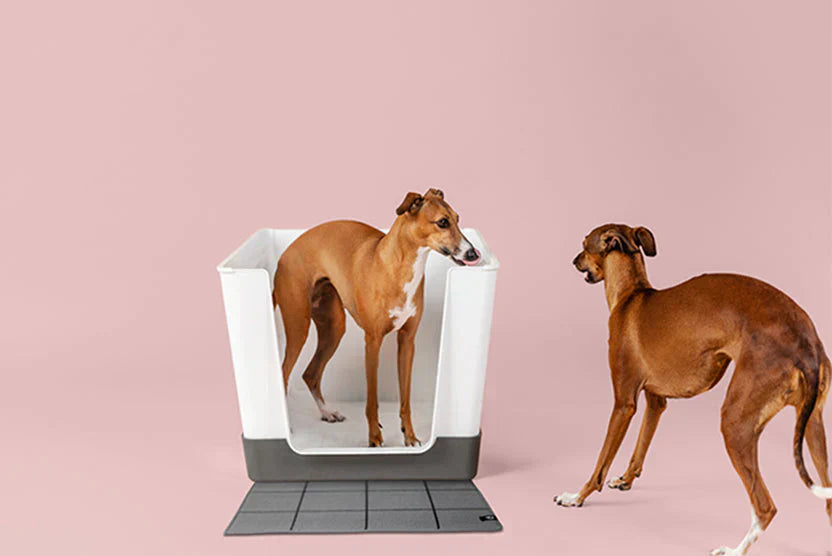Building Trust: 10 Activities for You and Your Dog

A brilliant way to show affection for your dog is by spending time together doing enjoyable activities.
Dogs thrive on companionship and interaction, so incorporating playful moments into your daily routine can strengthen your bond. Whether it's a game of fetch in the garden or a gentle tug-of-war with their favourite toy, these shared experiences not only provide mental stimulation but also reinforce trust and affection.
Spending time on enjoyable activities with your dog shows them that they are an important part of your family. This helps make them happier and healthier.
1-Create a Cosy Space
The importance of comfort for our pets cannot be understated. When our dogs feel safe and comfortable in their surroundings, it positively impacts their overall well-being. Creating a cosy space for them where they can relax, unwind, and feel secure is essential.
This can include a cosy bed in a quiet spot, warm blankets, or a special area in the living room where they can relax with us. A comfortable setting helps to reduce stress and anxiety in our pets, making them happier and healthier companions.
Dog hugs and cuddles play a significant role in strengthening the bond we share with our furry friends. These caring moments give pets the love and attention they need, and they help us feel closer to them, too. Having a dog snuggled up next to us can feel really pleasant. It brings a sense of love and comfort for both of us.
When used alongside positive feedback during calm moments—like praising your pup for settling down—this practice gently supports behaviour modification without stress. By allowing our dogs to snuggle with us and rewarding their relaxed behaviour, we nurture a deeper emotional connection that enriches our lives together.

2-Engage in Interactive Play
Playing interactive games with our dogs is a pleasurable way to engage with them and provides plenty of amusement. There are various activities we can do together, such as fetch, tug-of-war, or even hide-and-seek. These games not only stimulate our dogs physically but also mentally, encouraging them to utilise their problem-solving abilities and instincts.
The more interactive the game is, the more fun and rewarding it is for both the dog and the owner. They can also serve as great examples for positive reinforcement—like offering a treat when your dog brings the ball back or follows a cue mid-play. The benefits of bonding with dogs through interactive play extend beyond just having a great time. Engaging in these activities helps to strengthen trust and understanding between us and our pets.
When we play together, we understand each other's body language and signals. This aids us in building respect and enhancing our relationship. When paired with positive reinforcement puppy training, playtime becomes a fun and effective learning opportunity.
Regular play fosters a sense of companionship, making our dogs feel loved and valued, ultimately leading to a stronger and more harmonious household.
3-Use Positive Reinforcement
Using positive reinforcement is a highly effective approach to training our dogs. This method focuses on rewarding good behaviour rather than punishing bad behaviour, which can create a more positive learning environment. When we offer praise, treats, or playtime as rewards, we encourage our dogs to repeat the desired behaviours, reinforcing their understanding of what we expect from them. This strategy is especially useful when comparing positive versus negative reinforcement, as it relies on kindness and motivation instead of fear or confusion.
There are different types of rewards that can encourage good behaviour in dogs. These rewards can be adjusted to match each dog's preferences. Some may respond best to tasty treats, whilst others might be more motivated by verbal praise or their favourite toy. Understanding the nuances of positive discipline and the effects of positive or negative reinforcement helps us train more effectively.
Incorporating positive reinforcement vs negative reinforcement into our training vocabulary gives us the tools to better support our dogs through thoughtful, compassionate teaching.
4-Have a Spa Day at Home
Having a spa day at home for our dogs can be a delightful experience for both them and us. Grooming techniques such as brushing their fur, trimming their nails, and cleaning their ears not only improve their hygiene but also serve as a loving way to bond with them.
When we take time to pamper our pets, we show we're concerned about their health and comfort. It also helps them look smashing. Creating a quiet space with soft music and gentle care can help our pets feel relaxed during grooming. Relaxing our dogs during this spa day is crucial for their overall enjoyment of the experience.
Utilising massage techniques or calming sprays can help reduce tension in pets, making grooming easier and more enjoyable for everyone. Taking things slowly and ensuring our dogs feel at ease will make them more receptive to the grooming sessions. In fact, these moments are a subtle opportunity for behaviour modification—rewarding your dog with positive feedback during nail trims or brushing reinforces calm behaviour, just as in any other type of positive discipline. Ultimately, this time spent together contributes to their happiness and relaxation, creating a harmonious atmosphere in our home.
5-Take Fun Photos Together
Capturing memories with our dogs through photography can be an incredibly rewarding experience. Taking fun photos together allows us to document the special moments we share and creates lasting keepsakes that we can cherish for years to come. Whether we are out on a walk, playing in the garden, or simply relaxing at home, taking the time to snap photos can bring a sense of joy and nostalgia as we look back on these moments together.
Sharing these photos on social media is a superb way to connect with fellow pet lovers and showcase the bond we have with our dogs. Posting pictures of our adventures together not only allows us to share our joy but also invites others to celebrate the loving relationship between pets and their owners. Many pet parents use these snapshots to reflect on the journey of training and growth—comparing how far their dog has come thanks to positive reinforcement puppy training. These joyful milestones serve as living proof that positive reinforcement vs negative reinforcement techniques truly nurture happier, more confident pets.

6-Set Up an Assault Course
Creating a fun and engaging assault course for your dog can be a splendid way to encourage your pet to exercise and play. You can use simple items from around your house, such as cones, tunnels, and even chairs, to design challenges that will keep your furry friend active and entertained.
By setting up different stations with various activities, you not only promote physical fitness but also stimulate your dog's mental capabilities. Participating in these DIY dog challenges can lead to quality bonding time and also assist in reinforcing positive behaviours through entertaining training exercises.
This type of structured play opens the door for practical examples for positive reinforcement. When your dog successfully completes an obstacle, reward them with a treat, cheer, or favourite toy. It’s also a hands-on way to explore positive reinforcement negative reinforcement in action—notice how encouraging rewards work more effectively than removing a toy for a mistake. By learning to distinguish positive vs negative reinforcement during these sessions, you’ll gain confidence in shaping your dog’s behaviour through kindness and consistency.
7-Bake Homemade Treats
Making dog-friendly homemade treats is not only an enjoyable activity but also a wonderful way to show your dog how much you care. There are countless recipes available that cater to different dietary needs, ensuring that your pet receives healthy snacks made from quality ingredients. While baking, you’re also creating a great opportunity to incorporate positive reinforcement puppy training—offering a warm treat after a successful trick or calm behaviour reinforces their learning in a delicious way.
While preparing these tasty treats, you can also take the opportunity to teach your dog some new tricks and commands, reinforcing positive feedback in a hands-on, meaningful way. This wholesome endeavour not only strengthens the bond between you and your pet but also helps establish consistency in training. It's a great time to reflect on the power of positive or negative reinforcement, and why the former is usually more effective (and more fun!) for building lasting habits.
8-Schedule Daily Walks
Incorporating daily walks into your routine is essential for both you and your dog's well-being. Taking the time to explore new routes and discover different areas in your neighbourhood can provide a stimulating environment for your pet.
These daily walks not only contribute to your dog's physical health but also offer mental stimulation through all the new sights, sounds, and smells they encounter. Every time your pup walks calmly on leash or follows your lead, it's an ideal moment to practice positive reinforcement vs negative reinforcement—rewarding desirable behaviour to encourage more of it.
Furthermore, regular walks help prevent behavioural issues and reinforce healthy routines. They are an excellent space for behaviour modification using real-life distractions. Whether you're working on polite leash manners or greeting strangers with a wag instead of a bark, walks become a mobile training opportunity rooted in positive discipline and consistency.
9-Arrange a Doggie Playdate
Organising a playdate for your dog can create essential socialisation opportunities that enhance your pet's interpersonal skills. Inviting a few of your dog's friends over can lead to meaningful canine relationships, allowing them to engage in playful interactions that are beneficial for their emotional health. Observing these natural behaviours can help you recognise how dogs communicate, and how well your own pup responds to positive versus negative reinforcement in a social context.
During these playdates, owners can connect, swap examples for positive reinforcement, and celebrate milestones together. You might even notice how different dogs respond to certain cues or encouragements—adding depth to your understanding of positive reinforcement negative reinforcement dynamics. These playful gatherings do more than entertain—they reinforce your dog’s ability to learn, adapt, and thrive within a supportive environment.

10. Relax with Film Nights
Setting aside some time for relaxing film nights with your dog can be a delightful way to unwind and bond. You can choose dog-friendly films that often feature loveable canine characters or engaging stories.
Cosying up together on the settee with some nibbles for both you and your pet can create a heartwarming atmosphere, fostering a deeper connection as you share moments of joy. This calm and comforting experience can be a delightful escape from the busyness of daily life, making it a cherished part of your routine that both you and your dog look forward to.
Conclusion
Displaying affection to our dogs through enjoyable activities not only enhances their happiness but also deepens the bond we share with them. Whether we're engaging in interactive play, creating a cosy haven, or using positive reinforcement during daily routines, each shared moment reinforces our connection and builds trust. These moments support gentle behavior modification, helping our pets learn and grow through encouragement rather than correction.
By participating in these meaningful experiences—pampering sessions, playdates, or teaching new tricks—we create lasting memories that enrich our lives and theirs. More than anything, they remind us that positive feedback and consistent love are powerful tools in shaping well-adjusted, joyful pets. Ultimately, these moments contribute to a rewarding and merry life for both us and our cherished companions, celebrating the unconditional love at the heart of every pet-parent bond.
For more helpful insights and information, check out our related blog posts here:
Creating Bonding Moments Through Dog Grooming



